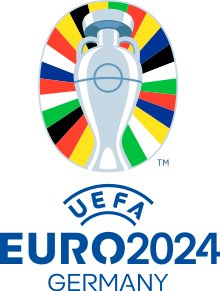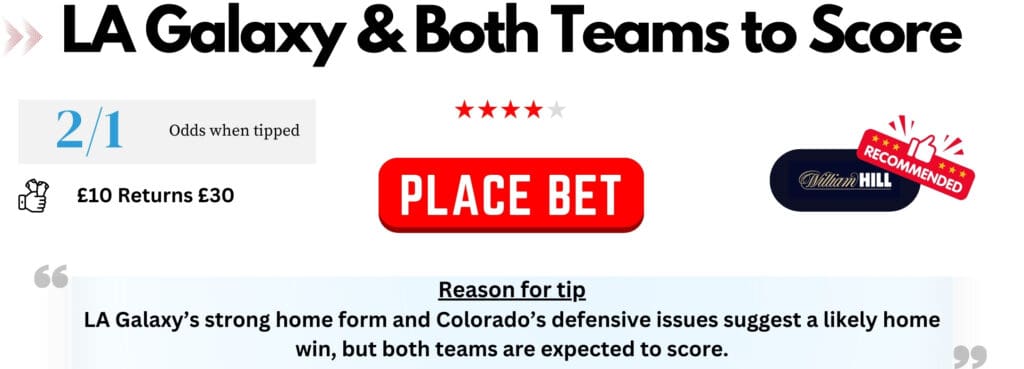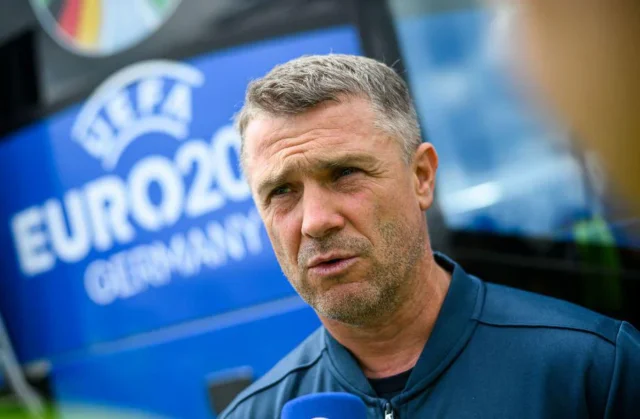Romania vs Ukraine predictions for Group E of Euro 2024. Group E rivals Romania and Ukraine kick off their Euro 2024 campaigns Monday afternoon in Munich. Read on for our free betting tips and predictions.


European Championship | Group Stage – Jun 17, 2024 at 2pm UK at Allianz Arena

Don’t have a Betvictor account? Click below to claim this offer👇
Romania vs Ukraine Predictions
Key Stats
– Romania conceded only five goals in their 10 qualifying matches, showcasing their defensive solidity.
– Artem Dovbyk, Ukraine’s leading forward, was the top scorer in La Liga last season with 24 goals.
– Ukraine’s recent form includes a 4-0 victory over Moldova, indicating their potential for scoring heavily.
Euro 2024 Group E Opener: Will Ukraine’s Firepower Outshine Romania’s Resilience?
As the anticipation builds for Euro 2024, Group E rivals Romania and Ukraine are set to commence their campaigns with an intriguing clash in Munich. This match marks the first competitive meeting between the two nations, with Romania arriving as the winners of their qualifying group and Ukraine securing their spot through the playoffs. This article delves into the potential dynamics of the game, key player duels, tactical strategies, and predictions based on the provided data.
Match Preview
Romania, participating in their sixth European Championship, aim to progress beyond the group stage for the first time since 2016. Historically, their performance at the Euros has been lacklustre, with only one victory in 16 matches. However, recent results have been encouraging. Under the guidance of Edward Iordanescu, Romania topped Group I in the qualifiers, remaining unbeaten with six wins and four draws, conceding just five goals. Their defensive solidity has been evident, even in recent friendlies where they managed to contain their opponents effectively, barring a 3-2 defeat to Colombia.
Ukraine, on the other hand, are making their fourth consecutive appearance at the Euros. Their past performances have been underwhelming, but they did reach the quarter-finals three years ago. The team’s journey to Euro 2024 was fraught with challenges, finishing third in their qualification group behind England and Italy. However, they managed to secure their place through playoff victories against Bosnia-Herzegovina and Iceland. Managed by Serhiy Rebrov, Ukraine have shown mixed form in their build-up to the tournament, with a notable 4-0 victory over Moldova boosting their confidence.
Team Analysis and Expected Lineups
Romania: Expected lineup: Nita; Ratiu, Dragusin, Burca, Bancu; M. Marin, R. Marin; Man, Stanciu, Mihaila; Dragus
Romania’s defensive organisation has been their strength, with Florin Nita expected to start in goal. The backline, led by Dragusin and Burca, has been resilient. Midfield dynamo Nicolae Stanciu, who has 14 international goals, will be pivotal. The attack, however, lacks a definitive focal point, with Denis Alibec, George Puscas, and Denis Dragus all competing for the lone striker role. The absence of Olimpiu Morutan due to injury might see Parma’s Valentin Mihaila and Dennis Man getting significant playing time.
Ukraine: Expected lineup: Lunin; Konoplya, Zabarnyi, Matviyenko, Zinchenko; Shaparenko, Stepanenko, Sudakov; Tsygankov, Dovbyk, Mudryk
Ukraine’s attack boasts notable names like Mykhailo Mudryk and Viktor Tsygankov, flanking Artem Dovbyk, who is expected to lead the line following a prolific season in La Liga. Oleksandr Zinchenko’s versatility will see him likely cover the left-back position due to Mykolenko’s injury. The midfield trio of Shaparenko, Stepanenko, and Sudakov will be crucial in both defence and attack transitions.
Key Areas of the Field and Player Duels
The midfield battle will be critical in determining the flow of the game. Romania’s Stanciu and Ukraine’s Sudakov are expected to be the orchestrators for their respective teams. The duel between these two creative midfielders could be decisive, with Stanciu’s experience potentially giving Romania an edge. However, Sudakov’s youthful exuberance and technical skills make him a formidable opponent.
On the flanks, the contest between Romania’s Dennis Man and Ukraine’s Mykhailo Mudryk will be intriguing. Both players possess pace and dribbling ability, making them key outlets for their teams. Defensively, Romania’s Dragusin will need to be at his best to contain Dovbyk, whose goal-scoring prowess poses a significant threat.
Tactical Gameplay and Strategies
Romania are likely to adopt a conservative approach, focusing on their defensive solidity and looking to exploit counter-attacks. Their midfield will aim to control possession and create opportunities for the wingers to exploit Ukraine’s defensive gaps.
Ukraine, with their attacking talent, will likely dominate possession and seek to press high up the pitch. Rebrov’s strategy will be to utilise the pace of Mudryk and Tsygankov on the wings, creating chances for Dovbyk. Ukraine’s defensive line will need to remain compact to prevent Romania from capitalising on any counter-attacks.
Strengths and Weaknesses
Romania: Strengths:
- Strong defensive organisation, evidenced by their low goals conceded during qualifiers.
- Experienced midfield with Stanciu leading by example.
- Effective in set-pieces and counter-attacks.
Weaknesses:
- Lack of a definitive goal-scoring striker, which could hinder their ability to convert chances.
- Potential over-reliance on Stanciu for creative plays.
Ukraine: Strengths:
- Dynamic and versatile attacking options with Mudryk, Tsygankov, and Dovbyk.
- Solid midfield capable of controlling the tempo of the game.
- Ability to score from various situations, including long-range efforts.
Weaknesses:
- Defensive vulnerabilities, particularly in the absence of Mykolenko.
- Inconsistent performances in recent matches, highlighting potential gaps in concentration.
Managerial Analysis
Edward Iordanescu has brought stability to Romania, improving their defensive record significantly. His tactical acumen in organising the team’s defence and utilising the counter-attack has been commendable. However, his challenge will be to find a reliable goal-scorer among his forwards.
Serhiy Rebrov, managing at his first major tournament, has a more attack-oriented philosophy. His emphasis on high pressing and quick transitions can be effective but also leaves his team vulnerable at the back. Rebrov’s inexperience at this level could be a factor, and his ability to adapt during the match will be tested.
Expected Goals Analysis
Romania have an expected goals (xG) average of 1.6 per game, reflecting their balanced approach in both creating and converting chances. Their xG suggests that while they are capable of scoring, they often rely on a solid defence to secure results.
Ukraine’s expected goals average stands at 1.5 per game. Their attacking prowess is evident, but their xG also highlights a need for clinical finishing. With players like Dovbyk, Mudryk, and Tsygankov, Ukraine have the potential to outperform their xG if they can capitalise on their chances.
Tactical Analysis: Deep-Dive
Offensive and Defensive Strategies
Romania’s strategy under Edward Iordanescu has been largely focused on solid defence and quick counter-attacks. Their qualification campaign, where they conceded only five goals, highlights their defensive robustness. This approach was evident in recent friendlies, where they managed to keep clean sheets against Northern Ireland and Liechtenstein, showing their ability to maintain defensive discipline. Key defenders like Radu Dragusin and Andrei Burca play pivotal roles in this setup, providing a strong central defensive partnership.
Offensively, Romania struggle to find a consistent goal-scorer. The debate around their lone striker choice—whether Denis Alibec, George Puscas, or Denis Dragus should lead the line—reflects their ongoing issues in front of goal. Nicolae Stanciu, their captain and midfield maestro, is crucial in creating chances and dictating play. His experience and vision are vital for Romania’s offensive transitions, though the team lacks a cutting edge without a reliable striker.
Ukraine, managed by Serhiy Rebrov, adopt a more attacking strategy. Their offensive approach is characterised by high pressing and quick transitions, leveraging the pace and skill of their wide players, Mykhailo Mudryk and Viktor Tsygankov. Artem Dovbyk, who had a standout season in La Liga, is expected to lead the line. Ukraine’s attacking potential is significant, with players capable of creating and converting opportunities, as seen in their 4-0 victory over Moldova.
Defensively, Ukraine have shown vulnerabilities, particularly in their 3-1 defeat to Poland where they conceded three goals within the first half-hour. The absence of Vitaliy Mykolenko means Oleksandr Zinchenko might have to cover at left-back, which could weaken their midfield. The defensive partnership of Illia Zabarnyi and Mykola Matviyenko will be tested against Romania’s counter-attacks.
Individual Performances of Key Players
For Romania, Nicolae Stanciu stands out with his playmaking abilities and leadership. His 14 goals in international football underline his importance to the team. Additionally, Dennis Man and Valentin Mihaila are expected to provide width and pace on the flanks, crucial for Romania’s counter-attacks.
Florin Nita’s role as the goalkeeper is also critical. His experience and command of the penalty area add stability to Romania’s defence. However, the team’s success heavily relies on finding a consistent goal-scorer among Alibec, Puscas, and Dragus.
Ukraine’s Artem Dovbyk is a key player, having scored 24 goals in La Liga. His ability to lead the line and his finishing skills make him a primary threat. Mykhailo Mudryk and Viktor Tsygankov are also essential for Ukraine’s offensive play. Mudryk’s pace and dribbling can destabilise defences, while Tsygankov’s creativity and vision are vital for setting up chances.
In midfield, Heorhiy Sudakov’s role in linking play and contributing offensively will be crucial. Defensively, the performances of Zabarnyi and Matviyenko will determine Ukraine’s ability to withstand Romanian attacks.
Impact of Management on Style of Play
Edward Iordanescu has transformed Romania into a defensively solid unit, focusing on structure and discipline. His approach has improved Romania’s standing, as evidenced by their unbeaten run in the qualifiers. However, his conservative tactics may limit Romania’s attacking potential, a critical aspect that needs addressing.
Serhiy Rebrov, in his first major tournament as manager, brings an attacking mindset to Ukraine. His emphasis on high pressing and quick transitions aims to maximise Ukraine’s offensive talent. However, this aggressive approach has left Ukraine exposed defensively at times, as seen in their match against Poland. Rebrov’s ability to adapt and balance his tactics will be pivotal for Ukraine’s success.
Expected Goals Analysis
Romania have an expected goals (xG) average of 1.6 per game, reflecting their ability to create chances but also highlighting their struggles in finishing. This average is a testament to their balanced approach but indicates room for improvement in their attacking efficiency.
Ukraine’s expected goals average of 1.5 per game showcases their attacking prowess. Despite creating numerous opportunities, their conversion rate needs to improve. With players like Dovbyk, Mudryk, and Tsygankov, Ukraine have the potential to exceed their xG if they can be more clinical in front of goal.
Comparison of Tactics and Performances
Tactically, Romania’s defensive solidity contrasts with Ukraine’s aggressive offensive play. Romania rely on a structured defence and quick counter-attacks, while Ukraine focus on high pressing and exploiting spaces with their pacey wingers.
Player performances reflect these tactics. Romania’s defensive stalwarts Dragusin and Burca exemplify their solid backline, while Stanciu orchestrates the midfield. Ukraine’s Dovbyk is the focal point of their attack, supported by the creative Tsygankov and the dynamic Mudryk. The contrast in styles sets up an intriguing tactical battle.
Suggestions for Improvement
For Romania, finding a consistent striker is paramount. Their defensive solidity is commendable, but without a reliable goal-scorer, they will struggle against stronger opponents. Enhancing their attacking cohesion and finishing is crucial for their progression.
Ukraine need to bolster their defensive resilience. While their attacking approach is effective, they must tighten their defence to avoid early setbacks, as seen against Poland. Balancing their offensive exuberance with defensive discipline will be key for Rebrov’s side.
Strengths and Weaknesses
Romania’s Strengths:
- Solid defensive organisation.
- Experienced playmaker in Nicolae Stanciu.
- Effective counter-attacks and set-pieces.
Romania’s Weaknesses:
- Inconsistent goal-scoring options.
- Potential over-reliance on Stanciu.
Ukraine’s Strengths:
- Dynamic and versatile attacking players.
- High pressing and quick transitions.
- Strong individual talents like Dovbyk and Mudryk.
Ukraine’s Weaknesses:
- Defensive vulnerabilities.
- Inconsistent performances and concentration lapses.
Managerial Critique
Edward Iordanescu has done well to stabilise Romania and improve their defensive record. However, his conservative approach may limit the team’s attacking potential. Finding a balance between defence and attack is essential for their success in the tournament.
Serhiy Rebrov’s attacking philosophy brings excitement but also exposes defensive frailties. His lack of experience at this level could be a hindrance, and his ability to adapt tactically during the tournament will be crucial. Rebrov’s reliance on offensive strategies may prove costly if not balanced with defensive caution.
Predictions and Betting Angles
Best Bet: Ukraine to Win
Ukraine’s attacking prowess, coupled with Romania’s defensive approach, makes a narrow victory for Ukraine the best bet for this match. Ukraine have shown they can score against stronger teams, having netted three goals in a recent friendly against Poland. Romania, while defensively solid, struggle to find the back of the net consistently, especially against higher calibre opposition.
Ukraine’s front line, featuring the likes of Dovbyk and Mudryk, offers a blend of pace, skill, and finishing ability that Romania may find challenging to contain. Additionally, Romania’s relatively low goals per game average during the qualifiers (1.6) suggests that while they can score, they rarely dominate matches offensively. Hence, a low scoring victory for Ukraine reflects the likely scenario where they edge out Romania with their superior attacking options.
Correct Score Prediction: 1-0 to Ukraine
Following the rationale of the best bet, the correct score prediction of 1-0 to Ukraine aligns with their expected gameplay dynamics. Ukraine’s ability to create and finish chances is evident from their average of 1.5 goals per game in the qualifiers. However, Romania’s disciplined defence, which conceded just five goals in ten qualifiers, will make it difficult for Ukraine to score more than once. The anticipated tight and tactical contest should see Ukraine manage to breach Romania’s defence, but Romania’s resilience will likely keep the scoreline to a single goal. This prediction underscores the balance between Ukraine’s offensive capabilities and Romania’s defensive strength.
Goalscorer Prediction: Artem Dovbyk to Score
Artem Dovbyk’s remarkable season in La Liga, where he emerged as the top scorer with 24 goals, positions him as the prime candidate to score in this match. His ability to lead the line effectively and his sharp finishing make him a constant threat. Dovbyk’s role as the focal point of Ukraine’s attack, supported by creative players like Mudryk and Tsygankov, ensures he will get opportunities to score. His physical presence and clinical finishing inside the box will be crucial against a Romanian defence that has shown vulnerabilities when facing quality strikers. Given his form and Ukraine’s attacking strategy, Dovbyk finding the back of the net is a strong possibility.
Corner Prediction: Ukraine to Win More Corners (Total Corners Over 8)
Ukraine’s expected dominance in possession and attacking intent will likely result in them winning more corners than Romania. With Ukraine averaging 4.2 corners per game in the qualifiers and their high pressing style, they should generate multiple corner opportunities. Romania’s defensive stance will naturally lead to numerous clearances and blocked shots, further increasing the corner count. Considering both teams’ styles and the context of the match, a total of over 8 corners is anticipated, with Ukraine expected to win the majority due to their sustained pressure and offensive play.
Innovative Market: Mykhailo Mudryk Over 2.5 Shots on Target
Mykhailo Mudryk’s ability to cut inside from the wing and take on defenders makes him a significant threat in the attacking third. His pace and dribbling skills allow him to create shooting opportunities, and Ukraine’s tactical setup will likely see him frequently involved in attacking plays. Mudryk’s role as a primary outlet for Ukraine’s offence means he will have multiple chances to shoot on target. Given Romania’s expected defensive approach, Mudryk will need to take several shots to break them down. Therefore, predicting Mudryk to have over 2.5 shots on target is well-founded, considering his attacking impetus and the likely flow of the game.
Top UK Bookies & Best Sign Up Offers
Subscribe To Our Newsletter For Exclusive Tips
Want to have exclusive tips from experts tipsters delivered right into your inbox? Subscribe Now To Our Newsletter. We will never spam, we fully respect your privacy!


























